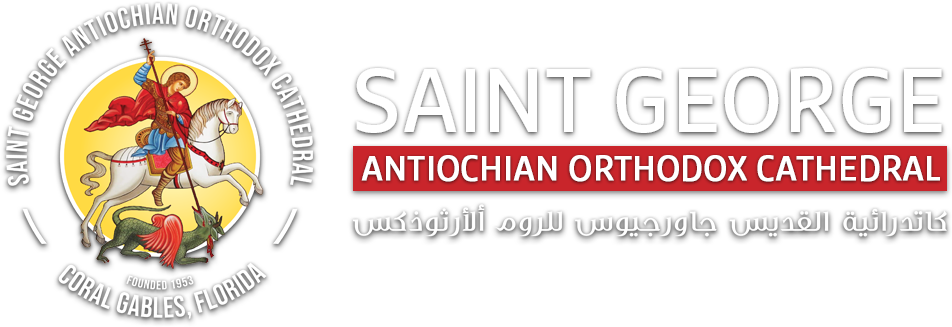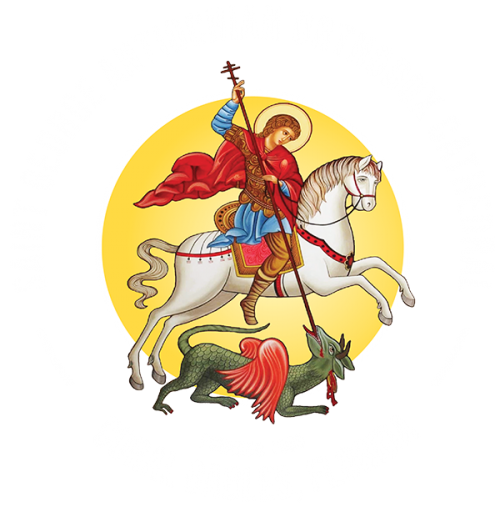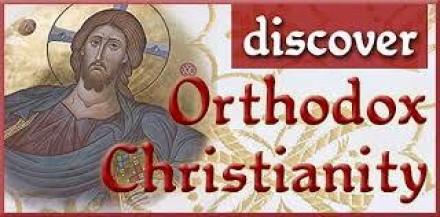The Life of Saint George, Feast Day April 23
Born in Cappadocia; died c. 303. Many legends have gathered around the name of Saint George, one of the 14 Holy Helpers, and there are differing accounts of his origin. There is evidence that George was, indeed, a real martyr who suffered at Diospolis (Lydda, Ludd) in Palestine before the time of Constantine, probably under Diocletian. He was probably born of Christian parents in Cappadocia, where his father was a martyr.
Later he himself took refuge in Palestine, where he became a Roman soldier and displayed courage. He is said to have been raised to the rank of military tribune of the imperial guards. On his mother’s death he inherited a fortune and attached himself to the court of the Emperor Diocletian in the hope of finding advancement.
Once when the emperor was present, heathen priests were consulting the entrails of animals to foretell the future. Those Christians among the guards made the Sign of the Cross on their foreheads. The emperor was extremely angry and ordered them flogged and dismissed. He then sent out an edict ordering the Christian clergy to make sacrifice to the pagan gods.
On the outbreak of persecution, George declared himself a Christian and distributed his money to the poor. When the decree which preceded the persecution was published against the churches in Nicomedia, “a certain man,” Eusebius tells us in his History, “of no mean origin, but highly esteemed for his temporal dignities, stimulated by a divine zeal, and excited by an ardent faith, took it as it was openly placed and posted up for public inspection, and tore it to shreds as a most profane and wicked act.” This man who showed such courage is believed to have been Saint George, and such a bold and defiant action well suits what we know of his character.
As a result, he was subjected to nameless tortures over a period of seven years. He was tied to a revolving wheel of blades and swords, thrown into a pit of quicklime, made to run in red-hot shoes, scourged with thongs of hide, beaten with sledge-hammers, and cast over a precipice; his limbs were broken and exposed to flame, and he suffered many other torments. He is said to have miraculously escaped from a cauldron of burning oil after he destroyed the temple of Apollo. One version says that by making the Sign of the Cross, he remained unhurt in all these intermediate trials. Frustrated that their tortures had little effect, George was beheaded.
His story also takes other forms, mainly legendary, the most familiar of which concerns his fight with the dragon. It is said that George was riding through the province of Lybia (Libya?), and came upon a city named Sylene. Near the city was a marsh in which a dragon lived. The people had attempted to kill it but were poisoned by the creature’s fetid breath.
To placate the dragon, they offered it two sheep each day, but when they began to exhaust their supply of sheep, they were forced to substitute a human each day instead, using a lottery to determine who would be sacrificed. At the time of George’s arrival, the lot had just fallen to the king’s daughter, Cleodolinda. No one volunteered to take her place, so she was dressed in bridal finery and sent to meet the dragon, weeping as she went.
George rode in upon this scene. The princess urged him to hurry on so that he would not also die. Instead of acting prudently (according to the wisdom of the world), Geoge made the Sign of the Cross and then attacked the dragon. After an energetic battle, the saint speared it with his lance. He then fastened the princess’s girdle around its neck, and the girl led the dragon into the city. The people were frightened and started to run away, but George told them not to be afraid–that if the whole city would believe in Jesus Christ and be baptized, he would slay the dragon.
The king and the people agreed, and more than 15,000 were baptized. George killed the dragon, and it was carried away on four ox carts. He accepted no reward for this service, but he asked the king to build churches, honor priests, and to maintain compassion for the poor.
The above legend is of Italian origin from a much later date than George himself. Words, however, attributed to him in these imaginary tales are characteristic of his faith and courage, and may well have been upon his lips as he faced his actual torture, such as: “Christ, my Captain, my Lord, I have no strength but what You give me. Help me this day, and the glory shall be Yours for ever and ever.”
He preached the Gospel and baptized many into the Christian faith. The Greeks called him “the great martyr.” His name and influence also spread far into the West under the influence of the Crusaders; however, devotion to him there predates the Crusades. Since the 5th century many churches could be found in the West bearing his name. It was in England, however, that his fame became most popular.
It is uncertain why he is the patron saint of England, though his cultus travel to the British Isles before the Norman Conquest (1066). William of Malmesbury states that SS. George and Demetrius, “the martyr knights,” were seen helping the Franks at the Battle of Antioch in 1098, and it appears probable that the crusaders, in particular King Richard I, who placed himself and his soldiers under George’s protection, returned from the East with a belief in the power of George’s intercession. His veneration as protector of England was officially approved by Pope Benedict XIV.
He is also patron of Britain’s oldest order of knighthood. King Edward III found the Order of the Garter about 1347, of which George has always been patron, and for which the chapel of Saint George at Windsor was built by Edward IV and Henry VII.
“Saint George’s arms” became the basis of the uniforms of British soldiers and sailors, and George’s red cross appears on the Union Jack (British flag) (Benedictines, Bentley, Delaney, Gill, Sheppard, Tabor, White).
In art, George is portrayed as a youth in armor, often mounted, killing or having killed a dragon with his lance (sometimes broken) or sword (Tabor). His shield and lance pennant are a red cross on a white field (White). Generally, there is a princess near him. In some portrayals, (1) the princess leads the dragon; (2) Saint Margaret is the princess; (3) George is in armor standing on the dragon (not to be confused with the Archangel Michael, who is always winged); (4) George is in the robes of the Order of the Garter; (5) with Saint Demetrius in icons; or (6) as George is martyred in a brazen bull, dragged by horses, beheaded with a sword (Roeder). An excellent icon of Saint George can be found in the frescoes of San Giorgio degli Sciaoni, Venice, by Carpaccio (Tabor).
The “dragon” initially connoted the evils of paganism that were overcome by the saints (primarily missionaries). But the symbol gave rise to legends of deliverance from fierce dragons that were intent upon devouring whole populations. This was the source of the story about Saint George related in the Golden Legend (Appleton).
Saint George is the patron of England, the Order of the Garter, Boy Scouts, the Italian calvary (which had retained a devotion to the holy knight), chivalry, Istanbul, Aragon, Portugal, Germany, Genoa, and Venice. In the East, he is the patron of soldiers, and also of husbandmen, due to a play on the Greek form of his name (Delaney, Roeder, White). He is invoked against the plague, leprosy, syphilis (White), and herpes (Sheppard).
Through the intercessions of the Holy and Great Martyr George, O Lord Jesus Christ, have mercy upon us and save us. Amen.









